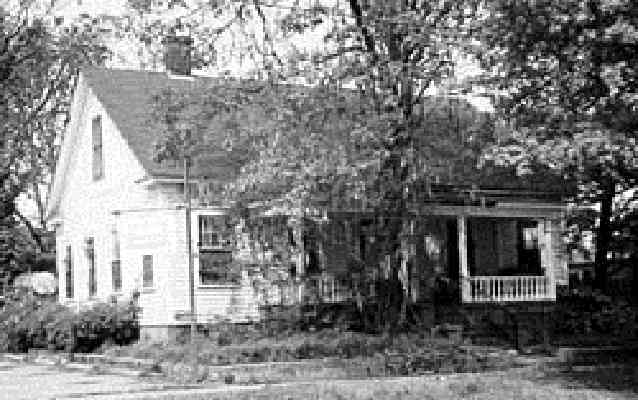Last updated: June 28, 2021
Place
South Carolina: Modjeska Monteith Simkins House

Modjeska Monteith Simkins was an important leader of African-American public health reform, social reform and the civil rights movement in South Carolina. Born in Columbia, Simkins attended elementary school, high school, and Benedict College and received a bachelor of arts degree in 1921. The same year, she began teaching at Booker T. Washington High School. Because public schools in Columbia did not allow married women to teach, she was asked to resign when she married Andrew Simkins in 1929.
In 1931, Simkins entered the field of public health as the Director of Negro Work for the South Carolina Anti-Tuberculosis Association, and became the state's only full-time, statewide African-American public health worker. For decades prior to the 1930s, southern racism and poverty had created an alarming increase in deaths among African Americans due to tuberculosis, pellagra, and other illnesses. By creating alliances with influential white and African-American groups and raising funds, Simkins made a substantial impact on the health of African Americans in South Carolina. It was during this period in Simkin's life that she and her family moved to 2025 Marion Street. Simkins used this late 19th/early 20th-century vernacular house as her residence, office, meeting place, and for lodging of civil rights associates. Simkins' guests included Thurgood Marshall, who stayed here when hotels in the city were closed to African Americans.
In 1942 Simkins lost her position with the Anti-Tuberculosis Association--partly due to her increasing involvement with the National Association for the Advancement of Colored People (NAACP). In 1939, when the South Carolina NAACP was formed, Simkins was already a member of the executive board of the local Columbia NAACP branch and chair of its program committee. Simkins became one of the founders of the state conference, elected to the first executive board, and the first chair of the state programs committee. In 1941 she was elected Secretary of the state conference--the only woman to serve as an officer. During her tenure as Secretary (1941-1957), her work helped the State move towards racial equality. From 1943 to 1945 she was instrumental in gaining teacher approval and support for teacher equalization lawsuits in Sumter and Columbia, South Carolina. Perhaps her most significant work took place in 1950 with the South Carolina federal court case of Briggs v. Elliott. Working with the Reverend J. A. DeLaine, president of the Clarendon County NAACP, Simkins helped write the declaration for the school lawsuit that asked for the equalization of Clarenden County black and white schools. The Clarenden County case was eventually reworked to become one of several individual cases set up to directly challenge the “separate but equal” doctrine in the Supreme Court case of Brown v. Board of Education in Topeka in 1954. Because her activism was at times controversial, her life and home became targets. An unknown person shot at her house during the time she was active with the NAACP, and she was accused of subversive activities and investigated by the Federal Bureau of Investigation and the House Un-American Activities Committee.
Simkins was able to serve in leadership positions that were traditionally unavailable to women in the civil rights movement. In 1981 she was honored by a coalition of civil rights groups, who established an endowment in her name to provide income for activists working for the causes of the underprivileged. Hundreds of people attended a memorial service following her death on April 5, 1992, and Judge Matthew J. Perry stated, “she probably will be remembered as a woman who challenged everyone. She challenged the white political leadership of the state to do what was fair and equitable among all people and she challenged black citizens to stand up and demand their rightful place in the state and the nation.”
The Modjeska Simikins House was added to the African American Civil Rights Network in June 2021.
The African American Civil Rights Network recognizes the civil rights movement in the United States and the sacrifices made by those who fought against discrimination and segregation. Created by the African American Civil Rights Act of 2017, and coordinated by the National Park Service, the Network tells the stories of the people, places, and events of the U.S. civil rights movement through a collection of public and private resources.
A project through the African American Civil Rights Grant Program, which works to document, interpret, and preserve the sites and stories related to the African American struggle to gain equal rights, funded work to rehabilitate the Modjeska Monteith Simkins House. The project focused on various exterior surface repair work and the installation of modern mechanical, electrical, and plumbing systems to help preserve this historic site for future generations.
Visit the National Park Service We Shall Overcome travel itinerary to learn more about the civil rights movement themes and histories. Also, be sure to check out Civil Rights subject site.
